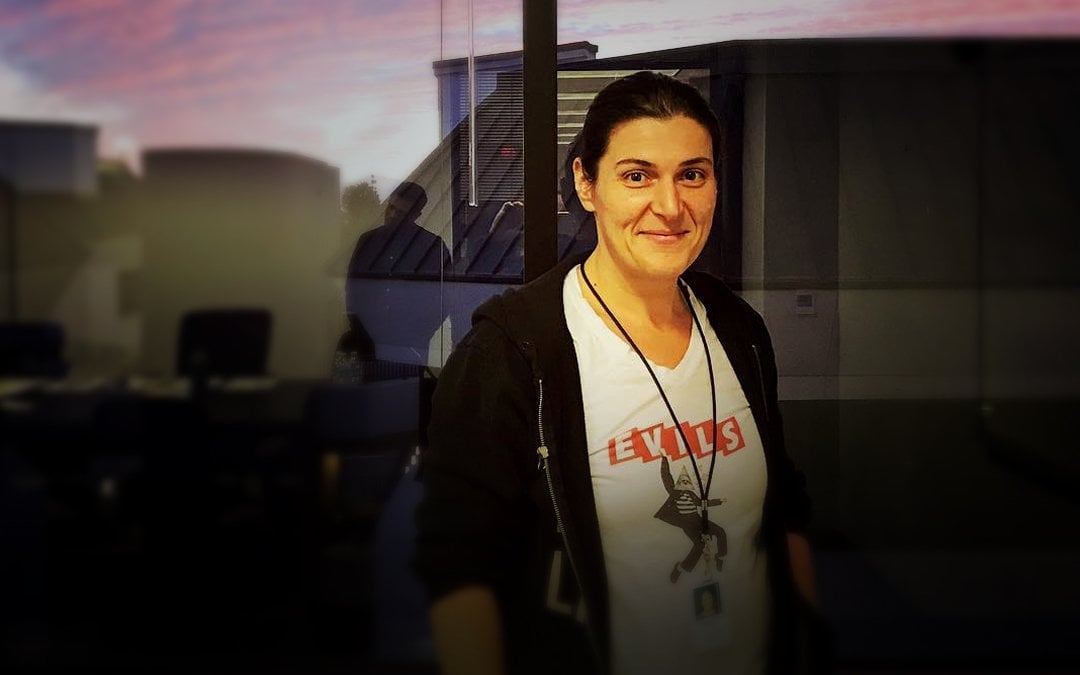The Bricks of Breaking In: Lit Manager Sonia Gambaro on Seeking Representation
June 6, 2019
| Photo credit: Neide B Photography |
“How do I find representation?”
It’s a big question for aspiring writers. It’s also one that is asked, in most cases, prematurely; writers are often so eager to get their careers going that they reach out to reps before they’re ready. According to Sonia Gambaro of Equitable Stewardship for Artists, knowing when to take the step is difficult to gauge, but if you’re prepared, the process can be “exponentially easier.”
“Any new writer needs to have already written several pieces — both features and TV — so that they themselves have begun to develop and have created a process that works for them,” she said.
Readying yourself to be a writer isn’t much different from any other job — Gambaro likens it to working as a hair stylist.
“I’m not going to learn one haircut and then say, ‘Alright, everybody sit down. This is the haircut that I have. Everybody’s getting a buzz cut.’ No, it doesn’t work that way … Every project has its own intricacies and obstacles and nuance … You’re going to need to have some sort of foundation and process in order to tackle [the work] and do so successfully.”
Building skills doesn’t happen overnight, either; it takes time to get your writing to where it needs to be.
“It’s gonna take about five, six, seven things that are pretty crappy until you start getting into what’s even good,” Gambaro said.
“I’d never sign somebody who had just one project. I want to know they are in some way, shape or form prolific; dedicated, disciplined, motivated and writing regularly.”
When a writer has honed their skills, Gambaro recommends he or she create a portfolio of samples to share.
“I think everyone needs to have two pilots and a feature,” she said.
For comedy writers, she suggests writing in multi-cam and coming up with one joke every day.
“It’s also powerful and good for their chops to have a packet, at least be aware of how to write a packet and how to put things together,” she said.
As a manager, Gambaro loves helping new voices break through. While she looks at every query that comes her way, most of her clients land by referrals from executives or other writers.
Gambaro has identified qualities that have helped writers she has signed develop successful, lasting careers; storytelling elements that writers either have or don’t, she said, include strong themes and character work, great dialogue and real messages behind stories.
At its core, the relationship between the writer and the manager is about teamwork — each party contributes to the same goal — and Gambaro has expectations of her clients.
“I want to see new pages. I expect they are going to be constantly thinking of new ideas. I expect they’re going to be tracking intellectual properties that interest them. I expect they are going to be on time to their meetings,” she said.
Follow-through from clients is also very important.
“If I get you to Point A, I want you to be able to bring it home. If we get you in the room for something, show up and be professional and prepared,” she said.
“I expect that you’re constantly working on and administering your own career as well. You should be out there meeting with other writers and trying to level up … your relationships can be mutually-advantageous.”
Although networking can sometimes feel awkward for writers, it’s an important part of growing your career.
“[Networking] is the lifeblood of this business, so you’re either going to resist it or you’re going to embrace it and those who embrace it seem to flourish,” Gambaro said.
What one can expect when working with her can be summarized in one word: Communication.
“Should I learn anything that has to do with their career, I’ll communicate that to them right away,” she said.
“You can also expect I’m taking shots where it is appropriate with your work and I’m out there all the time talking to executives on both the TV and the film side. We know who’s looking for what and if your material and/or your sensibility is right for something, I’m going to fight tooth and nail to get you read, to get you seen.”
Contests can also be helpful; Gambaro regularly looks at finalists from Nicholl, Zoetrope, Final Draft and the Austin Film Festival. Additionally, Gambaro said competitions can help writers understand where they rank in the world.
For up-and-comers, another thing to work on is developing a steady focus on what you want to write and what you feel you do best.
“Really nail the world you want to write in first before you branch out,” Gambaro said.
“I’m not saying someone can’t write something completely different — look at Jordan Peele — but really get down what your forte is first. Because if I were a chef, I’m not going to try to learn French cooking and Mexican cooking and Italian cuisine all at once, I’m going to really nail one.”
It’s important to remember, according to Gambaro, that everyone’s path to breaking in is different.
“You never know what it’s going to be; for one writer it could be that they are staffed because they happen to have a phenomenal sample and a really good relationship with someone close to making that decision. For another client, it could be they got the right attention from a spec feature of theirs and a producer decides to hire them to write a feature,” she said.
“A lot of the time those first jobs do come from people around you or people you already know.”
Persistence and dedication are big for Gambaro, too.
“You’d be surprised how many people give up and you never hear from them again. It’s hard. Perseverance is a huge part of this,” she said.
“Don’t compare yourself to other people’s paths; your path is not the same as the next guy’s path. Nothing’s promised to you. You don’t know what his situation is or where he’s been before you.”
All in all, “just be cool and stay out of your own way,” Gambaro said.
Written by: Kelly Jo Brick
Kelly Jo Brick is a TV drama and documentary writer. A Sundance Fellow and alum of Women In Film’s Writer/Showrunner Mentoring Circle, Kelly Jo is also the Vice Chair of the WGAW Genre Committee. She wrote the Telly Award-winning film PAUSE and the Frank Lloyd Wright documentary, The Jewel In The Woods. Follow her on Bluesky @kellyjobrick.bsky.social



